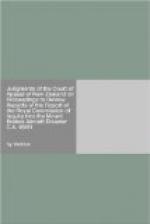“As will be explained later, there was at least one group of documents which certainly were in the possession of the airline as from the day following the disaster, and which have never been seen since. I am referring here to the flight briefing documents of First Officer Cassin.... (He) had left his briefing documents at home. They were recovered from his home on the day after the disaster by an employee of the airline. As I say, they have never been seen since.”
In the following paragraph 53 he observed—“If the explanation of the chief executive is to be accepted, then in the opinion of someone the briefing documents of First Officer Cassin, the co-pilot, were thought to be irrelevant to the disaster”; and in paragraph 54—“it follows that this direction on the part of the chief executive for the destruction of ‘irrelevant documents’ was one of the most remarkable executive decisions ever to have been made in the corporation affairs of a large New Zealand company”.
Those remarks require some brief comment. It must be explained that the “employee of the airline” mentioned at the end of paragraph 52 was Captain Crosbie. It is true that he was “an employee of the airline” but he did not go to the home of First Officer Cassin in that capacity. He had been asked by the Airline Pilots Association, the group which throughout the inquiry had very properly been concerned to protect the interests of the two deceased pilots, to act on their behalf for the purpose of bringing immediate aid and comfort to the two widows. His evidence was to the effect that he had gone to each of the homes for that purpose; that sometime later a member of Mrs Cassin’s family had invited him to take away a box containing such items as flight manuals; and he said he had done no more than that. He flatly denied taking any flight documents. But even if he had, the alleged conspiracy has always been limited in the Royal Commission Report to the executive pilots and other officers in the management area. It has never been suggested that it had extended as well to the airline pilots. As may be expected, throughout both investigations they have done their conscientious best to protect the valued reputations of their deceased colleagues.
There was documentary evidence before the Inquiry to the effect that on 30th November 1979 an in-house committee of Air New Zealand met on the instruction of Mr Davis for the purpose of deciding how to collect together all available information relevant to the accident. It seems that it began its practical work on Monday 3rd December. In that regard and as an example of the way in which the applicants say the cover-up allegation could have been answered by those affected they placed material before this Court which would suggest that the formation of such a committee is a conventional step taken by an airline when confronted with any serious disaster, that it was required by this company’s Accident Investigation Procedures




